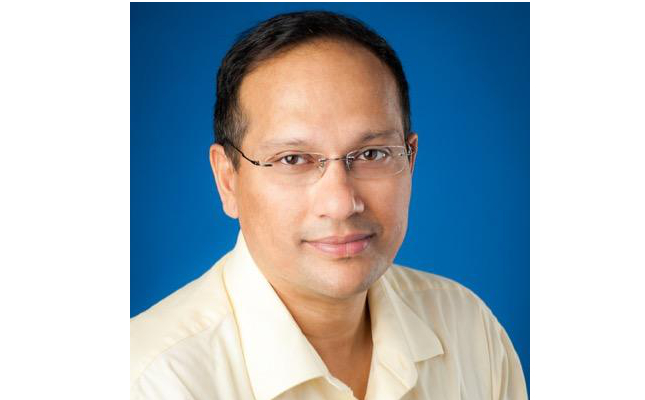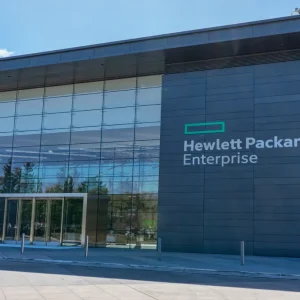
It is the countdown that will separate the winners from the losers. As the IoT enters organisation’s business DNA, the time for those that have not tapped into the IoT ecosystem is running out. But how long can they still survive without IoT?
According to the global head of HCL Technologies‘ IoT Practice, Sukamal Banerjee, the time will run out in the next six to eight months and it is critical that companies understand that without IoT, they will cease to exist.
Asked how much time businesses without an IoT strategy have until they disappear if they do not digitalise and embrace IoT, Banerjee said: "In my opinion, they probably have another six to eight months at maximum.
"The heavyweights of the industry are moving rather quickly. Despite moving with a lot of caution, caution simply means they are being careful about their approach. I think there is not a lot of time left.
"Especially for the private sector for companies to survive, companies need to move quickly; they do not have much time."
Banerjee said that one of HCL’s customers, described as "a significant company in their market space", saw the CEO telling him that if their IoT initiative does not work "we as a company are dead".
"That is the level of statement being used by CEOs.".
James Maynard, offering management director for global IoT and innovation at Fujitsu, said that businesses should fully evaluate the efficiencies that can be delivered by adopting IoT strategies.
Companies, he said, have more time to work around their IoT strategy. "The urgency of this is not as extreme as stated," he said.
"Each business should embrace digital transformation and IoT to improve their business now and to keep it competitive in the future.
"One of the biggest miss communications in the market today is that IoT will be realised in the future when it is here today.
"IoT is unique in its digital nature making it accessible to all and scalable with a level of creativity previously only seen in big budget bespoke solutions."
In a recent survey carried out by Accenture with the views of 1,400 C-suite executives, it has been found that 73% of companies have yet to make any concrete investments in the IoT.
87% of executives have recognised the significant potential of the IoT to deliver long-term job growth and 57% recognised the long-term revenue growth IoT can generate.
Yet, only 38% of those surveyed think their company’s senior leaders fully understand the IoT.
Banerjee said that some of the challenges he has seen in 2015 point to "a lack of clarity for businesses on where to start".
"If we think of HCL and our interaction with customers, almost 70% to 80% of engagement starts on the board in terms of what they should really do. That is not a very easy decision because IoT fundamentally questions the functional structure that exists in an organisation.
"It involves significant management change within the company. It is not just a technology program or adoption. It is a significant management challenge that will go through realising the full effects of IoT."
In Accenture’s survey, 84% of those surveyed have the belief that their organisations have the capability to create new, service based income streams using the IoT.
Nearly half (46%) of the C-execs think that one of the key benefits to expect from the IoT in terms of business value, is the improvement of overall employee productivity and optimisation of the use of their assets.
Not a single IT leader said they do not expect any benefits from the IoT. Conversely, businesses are asking how to start and what to do like Banerjee has pointed.
He said: "In 2015, the most common expression by leaders on the IoT was ‘tell me where to start’. They were not asking ‘when should I start’. It is about telling ‘me’ where to start, that is the number one challenge, and it is a challenge that is going to be there in the next six to nine months."
Banerjee said that when looking at an IoT strategy,three main steps are define, test and run.
"Many of our customers are starting with ‘define’ and we do three things there. Number one, it is very important for a customer to conclude what other use cases he or she can look at, to begin, to adapt and start the journey.
"At this point in time, this is not like the old recipe for implementation, where the decision has been taken and that the company has to align and make it happen. That is not how IoT is going to progress, at least not for the next two years.
"It is going to happen by demonstrating success, increasingly within an organisation; finding the right use cases; a quick win. Defining a position around those is the first step."
Secondly, develop a business roadmap. "What is the three to five years roadmap the company has in terms of what it wants to achieve with the IoT?"
The final step for defining the IoT pathway to follow ties into the second part and it is around what should be the technology road map, which translates into what sort of budget businesses should be looking at.
"What costs they should be looking at, what kind of options they should be evaluating with respect to the cloud, how to move things around, and so on. Cloud is becoming a large component of the IoT cost and it is going to be a large percentage of the cost.
"Those aspects, all fall under ‘define’ and advising businesses, which we are doing with our customers."
Other important aspects for the roadmap is justifying the ROI from a business perspective and understanding that organisations need to have a clear view of what to expect of the next three to five years from now, "even if it is not 100% accurate".
"Having 70/80% sense of what is down the road, and defining that is a very important aspect," Banerjee said.
2016 will be the year when people stop talking about the hype of IoT and start looking at the use cases.
"This is very simple: we have seen that in the last four months of 2015, many businesses moved away from proof of concept (PoC) to actually implementing stuff. I believe that this will only pick up and like some other new things that happen in the marketplace there will be a few hiccups here and there."
He continued to say that on a broad level, we will probably see 92% to 95% of these use cases, or PoCs succeed, and at the moment is only going to increase.
"2016 is definitely going to see some really strong use cases and actual real life implementations, especially around specific access of manufacturing, the heavier manufacturing companies, healthcare (especially in the US), mining and related sources, energy – however energy might be affected by the collapsing oil prices-, and of course transportation and smart cities.
"Those are the industries that we believe will see some real life use cases."
Paul Egan, IoTUK principal consultant for hardware and communications at Digital Catapult, said: "In heralding the change from businesses that deliver "products" to ones that offer things "as a Service" the IoT will bring disruption to established businesses both big and small and we can expect a few "Kodak" types of incidents for long established brands that fail to embrace IoT.
"In the early phases of IoT adoption, agility and novelty will trump scale, however in ten years’ time we may see IoT 2.0, where what we understand as IoT today will just be, the Internet."








